OPS & TRAINING
A SOLDIER'S FIRST 24KM
02 Oct 2020
An endless sea of bobbing helmets, blisters on your feet, and your field pack pressing against your aching back. Any soldier will likely remember their experience of doing the 24km route march in BMT.
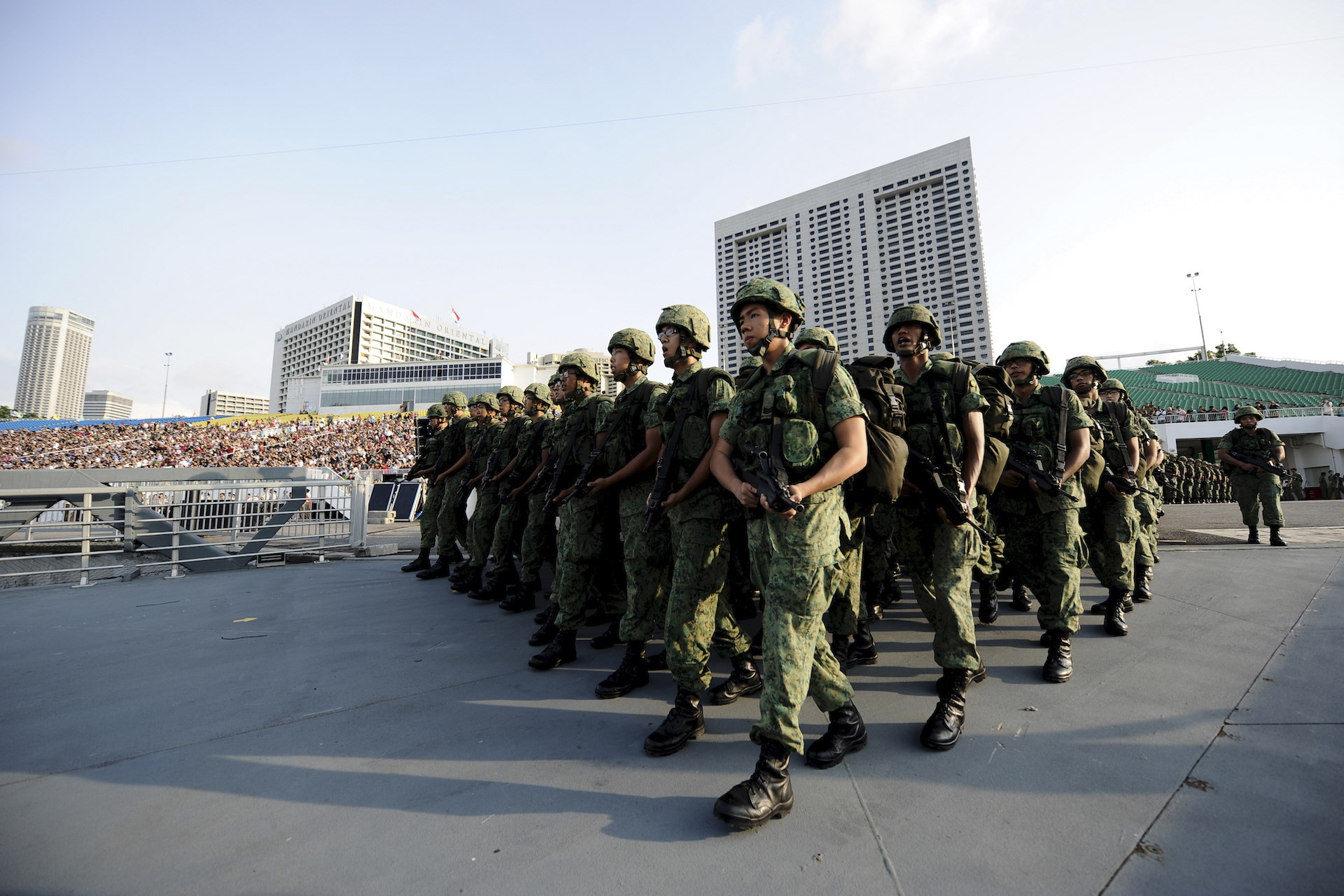

An endless sea of bobbing helmets, blisters on your feet, and your field pack pressing against your aching back. Any soldier will likely remember their experience of doing the 24km route march in BMT.
Here are five things to know about this rite of passage.
1. Troops on foot: Why do our recruits march?
Depending on the operational terrain, walking on foot can be an important way to move troops over long distances. Route marches are also a measure of a soldier's combat fitness, building up their physical strength and mental endurance.
The route march is thus a fundamental part of Basic Military Training (BMT), with the 24km march a capstone of a recruit's training.
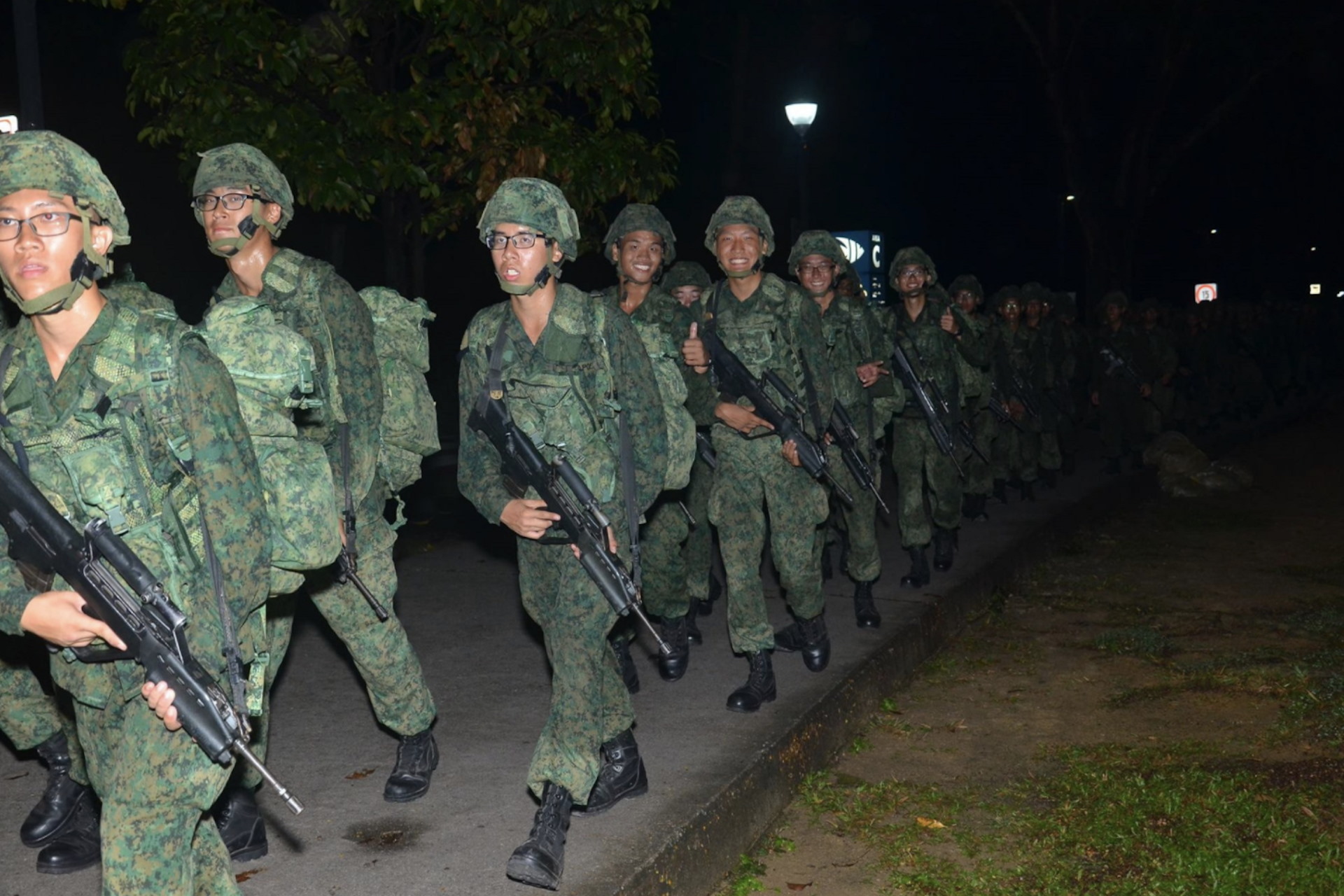
It is also routine in operational combat units. Infantry specialist cadets go through a 32km route march and navigation exercise to earn their Combat Skills Badge, while Commandos have to complete a gruelling 72km to earn the coveted red beret.
Many Operationally Ready National Servicemen also go through route marches as part of their In-Camp Training - a chance for the men to catch up, while preparing them for the training to come.
2. Taking baby steps: Building up their fitness
Of course, fresh recruits entering BMT are not expected to immediately start hauling 20kg loads and marching overnight for eight hours. They begin with baby steps.
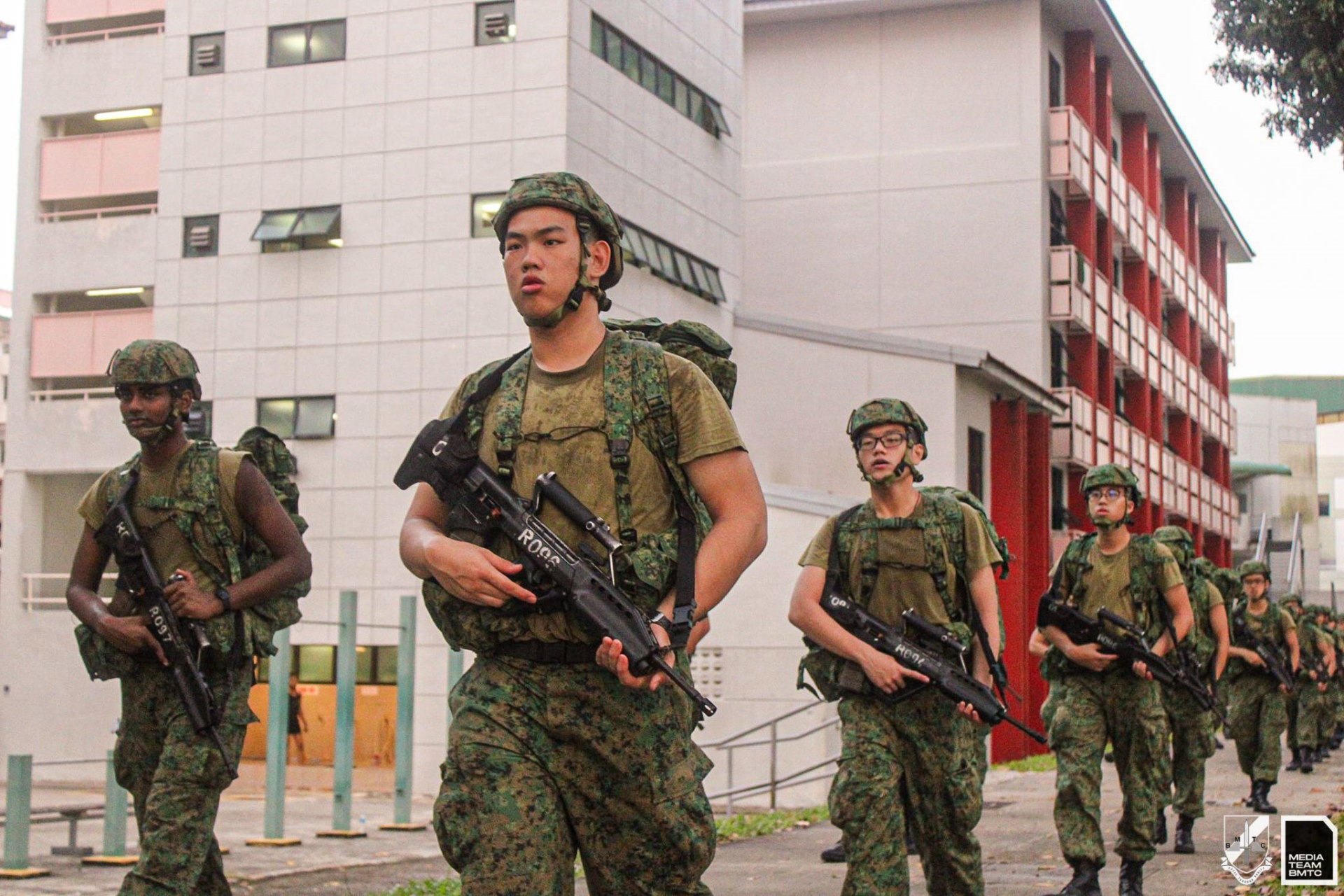
Recruits are first exposed to a 3km march with just their Load Bearing Vest, before progressively marching longer distances in full attire with their field pack and rifle.
By Week 9 of their BMT, they will typically have completed about five marches as part of their build-up training before the final 24km.
3. March of victory: A reminder to defend
While the "24-click" route march has long been held in Pulau Tekong, the Basic Military Training Centre began holding its route marches on mainland Singapore 10 years ago in 2010.
This symbolic route, which begins at Changi and ends at Marina Bay, is the reverse of the march of defeat by prisoners of war who walked from Nicoll Highway to Changi during World War II.
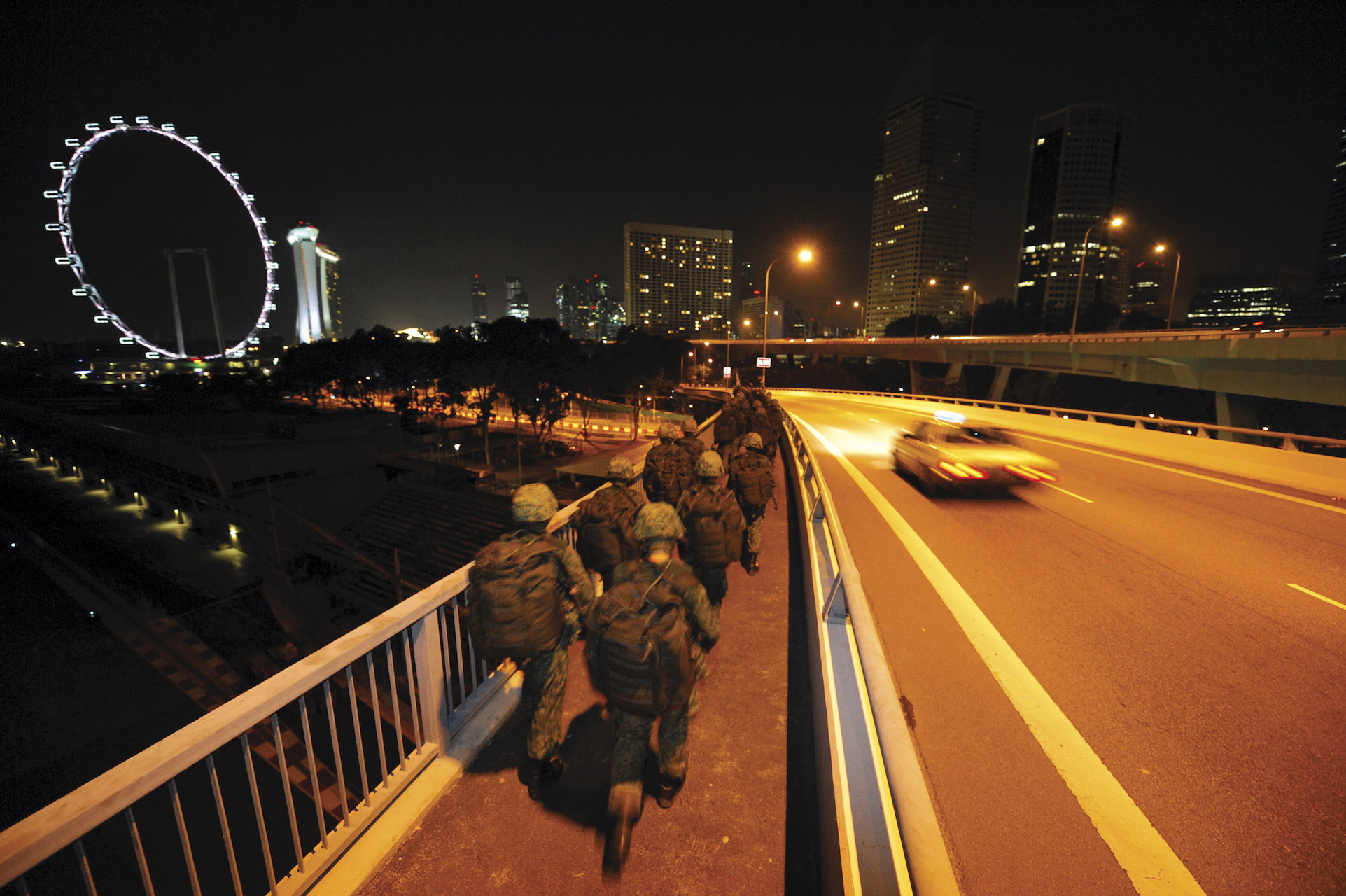
It is a stark reminder for recruits of why they need to defend Singapore.
The route also passes landmarks such as East Coast Park and the Formula One Paddock, motivating recruits to fight for their country (while making it more scenic than Tekong island).
4. Going the distance: Pushing through fatigue
If a symbolic route is not enough to keep recruits going, the songs and cheers they pick up throughout BMT may help "shorten" their journey.
Cheers help maintain cadence (rhythm) while taking soldiers' minds off their physical exhaustion as they march towards their next rest point.
The recruits rest every 4km, with rest points across the route to help rest weary feet. They take breaks of 20min or more to hydrate and fuel up with light snacks like bananas and chocolate bars.
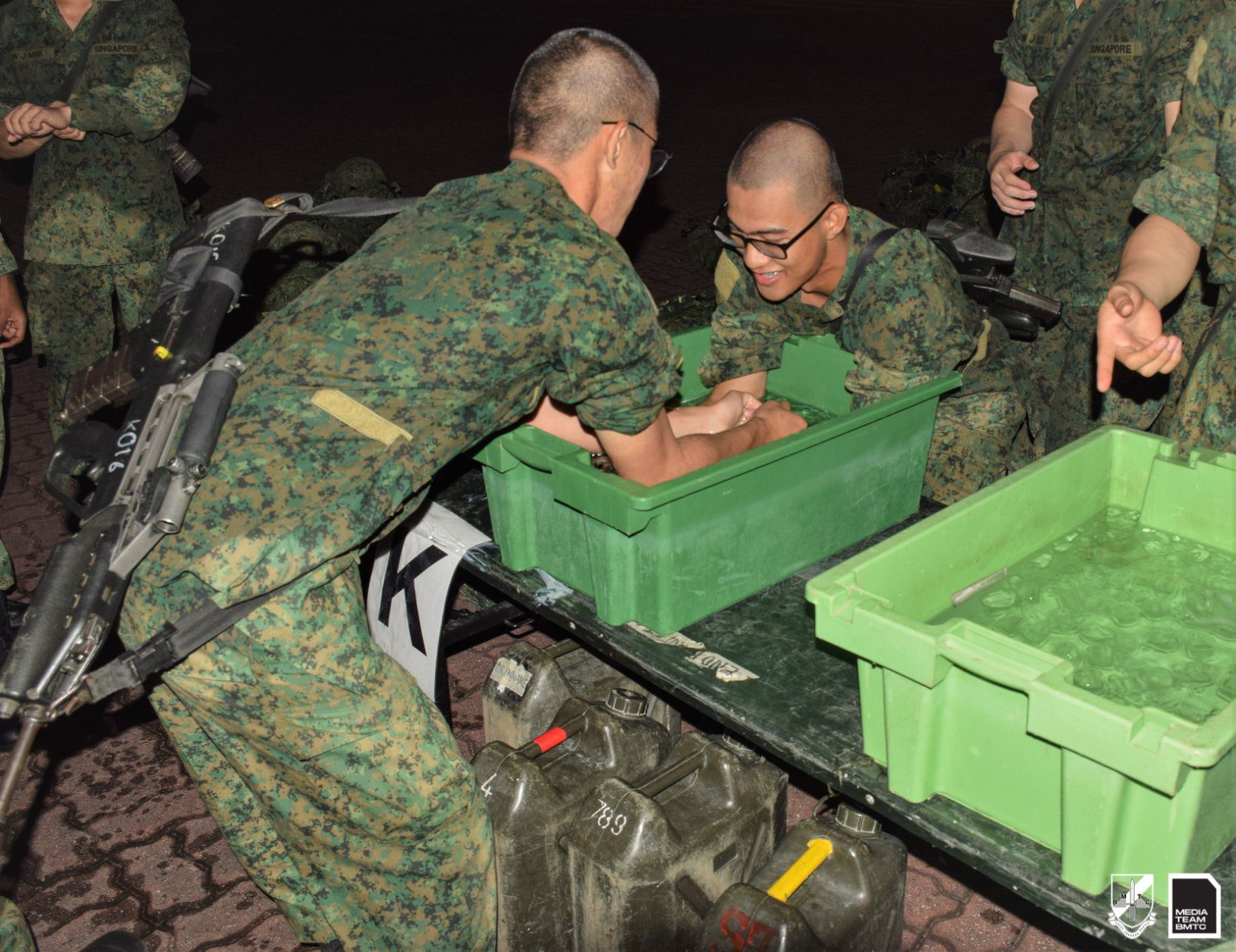
All soldiers who go through routes marches of 8km and longer also use the mandatory Arm Immersion Cooling System (AICS) during rest periods and upon completing the march.
The cooling regime was introduced SAF-wide in 2018 as part of efforts to prevent and manage heat injuries.

5. Journey's end: The graduation parade
Sleep deprived and exhausted, recruits face the toughest and most significant stretch in their final push to the finish. Relief and contentment take over as they make it to the end and finally rest before daybreak.
While the first graduation parade on mainland was held at the Float, other editions have been held at National Stadium and Pasir Laba Camp. Most recently, the first graduation parade in the heartlands was held at Our Tampines Hub in 2019.
Watch the BMT Roar at Our Tampines Hub on 7 Sep 2019!
Now, parades are held back at Pulau Tekong, as part of safety measures against COVID-19.
Recruits march in smaller functional groups instead of packing together as a Company. Each graduation ceremony is also held at Company-level within each School, instead of as an entire cohort.
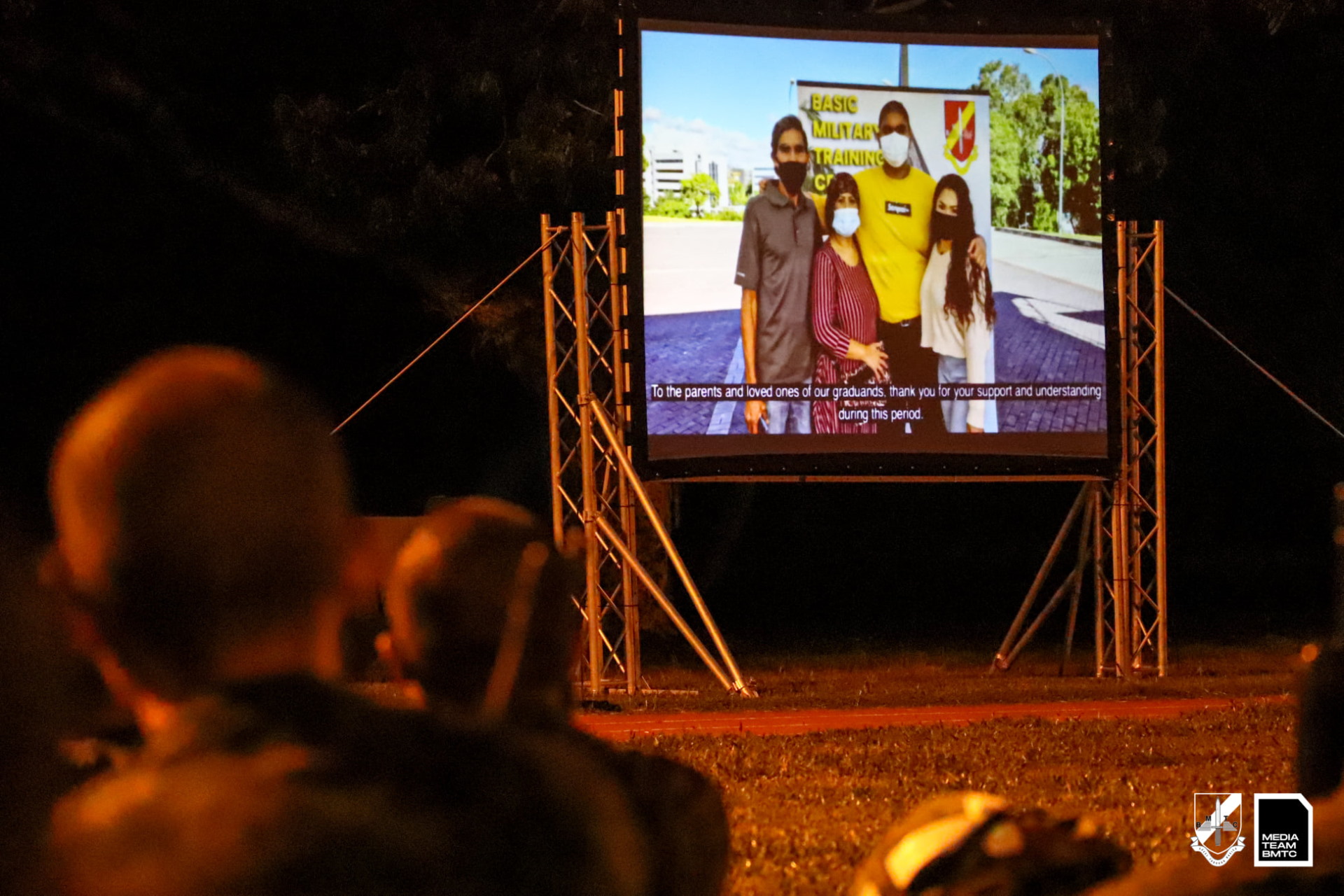
Though recruits are not greeted by cheering families at the finish, encouragement videos from their loved ones are screened at rest points to spur them on.
After overcoming their fatigue to complete their march, there is no denying their "P-O-P loh!" moment when they graduate as trained soldiers.
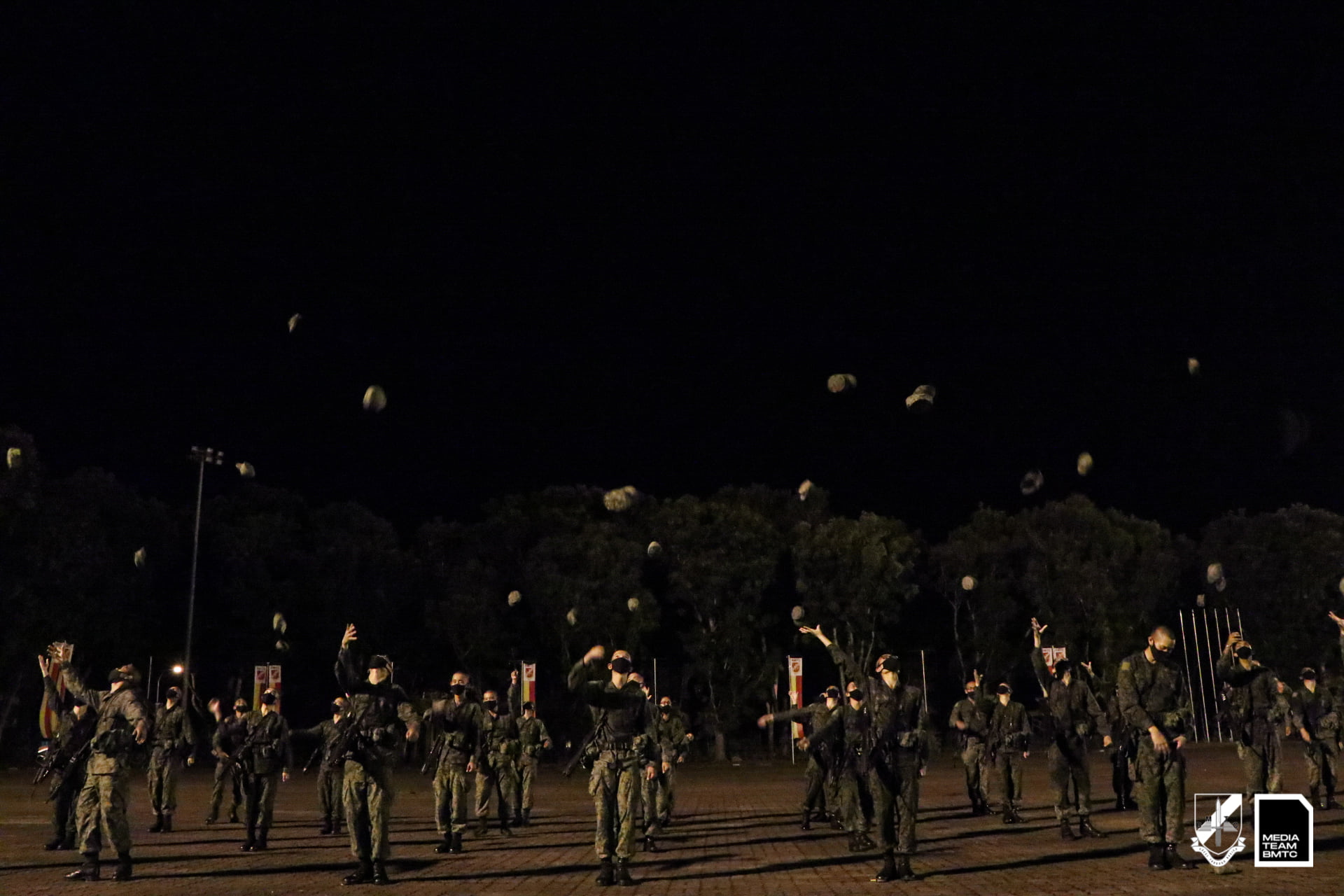
ALSO READ IN OPS & TRAINING

Exercise Wallaby 2025: To see better, shoot faster
31 Oct 2025
The SAF focuses on complex strike missions and multi-domain integration in Exercise Wallaby 2025, the 35th edition of its largest unilateral overseas exercise.

Ex Wallaby 25 – Greater Integration and Complexity
25 Oct 2025
The 35th edition of the SAF’s largest unilateral overseas exercise is an opportunity for expanded scale and deeper integration towards an effective, networked fighting force.

Ex Forging Sabre ramps up use of unmanned assets in integrated strike operations
12 Sep 2025
In this 10th edition of Exercise Forging Sabre, the SAF sharpened its cutting edge for the dynamic modern battlefield, with expanded integration between manned and unmanned platforms.


